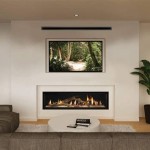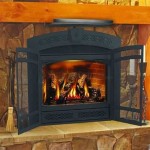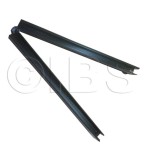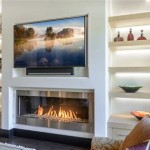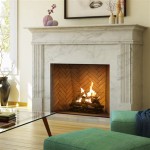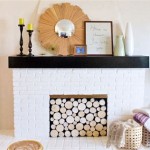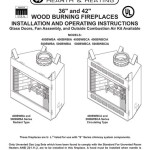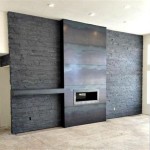Propane Fireplace Venting Requirements
Propane fireplaces, known for their efficient warmth and aesthetic appeal, are a popular choice for homeowners seeking a cozy and inviting ambiance. However, installing and operating a propane fireplace safely requires strict adherence to venting requirements. These regulations ensure the safe removal of combustion byproducts, preventing potential hazards like carbon monoxide buildup and fire risks. This article delves into the essential aspects of propane fireplace venting, highlighting the vital role it plays in safe and efficient fireplace operation.
Types of Venting Systems
Propane fireplaces typically employ two primary types of venting systems: direct vent and vent-free. Understanding the differences between these systems is crucial for choosing the right option for your home.
Direct vent fireplaces, as the name suggests, rely on a dedicated vent pipe to exhaust combustion byproducts outdoors. This pipe, made of materials like stainless steel or PVC, is typically installed through a wall or roof. Direct vent systems require a dedicated vent termination point, usually a chimney or a vent cap. The vent pipe draws in fresh air for combustion from outside the house, while exhausting flue gases outdoors. These systems are generally considered safer and more efficient than vent-free options due to their controlled combustion process.
Vent-free fireplaces, on the other hand, do not require a dedicated vent pipe. Instead, they are designed to vent combustion products indirectly through the room itself. The air intake and exhaust are integrated into the fireplace unit, and the flue gases are released into the room. While vent-free fireplaces offer installation flexibility, they require specific room sizes and ventilation requirements to ensure safe operation. Notably, vent-free fireplaces produce a higher amount of water vapor, which can potentially contribute to condensation and humidity problems in smaller rooms.
Venting Requirements and Regulations
Venting requirements for propane fireplaces are dictated by stringent safety codes and regulations to ensure safe and efficient operation. These codes, such as the National Fire Protection Association (NFPA) codes and local building codes, provide detailed guidelines for fireplace installation, venting, and operation.
Key aspects of venting requirements include:
-
Vent Pipe Size and Material:
The vent pipe diameter and material must be appropriate for the fireplace's output and heat capacity. The pipe should be made of a heat-resistant and corrosion-resistant material like stainless steel or PVC. -
Vent Pipe Length and Routing:
The vent pipe must be installed with a minimum length and distance from the fireplace unit to ensure adequate draft. The pipe routing should avoid bends or obstructions that could hinder proper airflow. -
Vent Termination Point:
The vent termination point, whether a chimney or vent cap, must be properly installed and located according to codes. It should extend above the roofline and be positioned to prevent backdraft and ensure efficient exhaust. -
Clearance to Combustible Materials:
Adequate clearance must be maintained between the vent pipe and any combustible materials, such as walls, ceilings, and insulation. This clearance prevents the pipe from overheating and causing fire hazards.
Importance of Proper Vent Installation
Proper venting is paramount for the safe operation of a propane fireplace. It plays a vital role in removing combustion byproducts, preventing carbon monoxide buildup, and ensuring efficient combustion. A properly installed vent system effectively draws in fresh air for combustion, exhausts flue gases outdoors, and maintains a balanced airflow to support the fireplace's operation.
Inadequate or improper venting can lead to several risks:
-
Carbon Monoxide Buildup:
Incomplete combustion can result in the release of carbon monoxide, a colorless and odorless gas that can be deadly. Proper ventilation ensures that carbon monoxide is exhausted outside the home. -
Fire Hazards:
A faulty vent can create a backdraft, causing hot flue gases to flow back into the room. This can overheat combustible materials and lead to a fire hazard. -
Reduced Efficiency:
Improper venting can hinder the fireplace's efficiency by reducing the airflow needed for proper combustion. This can result in higher fuel consumption and lower heat output.
Regular inspection and maintenance of the venting system is crucial for safe and efficient fireplace operation. It is recommended to have the system inspected annually by a qualified professional to ensure that it is in good working order and operating properly.

What Are The Best Ways To Vent A Gas Fireplace Zoroast
Gas Fireplace Venting Explained Heat Glo
Gas Fireplace Venting Explained Heat Glo

Vented Vs B Vent Direct Free Dixie S

Direct Vent Vs Natural Www Mygasfireplacerepair Com
.aspx?strip=all)
Benefits Of Direct Vent Fireplaces Regency Fireplace S

Icc Direct Vent Gas Venting Horizontal Termination Starter Kits

What Are The Best Ways To Vent A Gas Fireplace Zoroast

Direct Vent B Gas Free S Mazzeo Stoves Fireplaces

Are Vent Free Gas Fireplaces Safe Ventless

